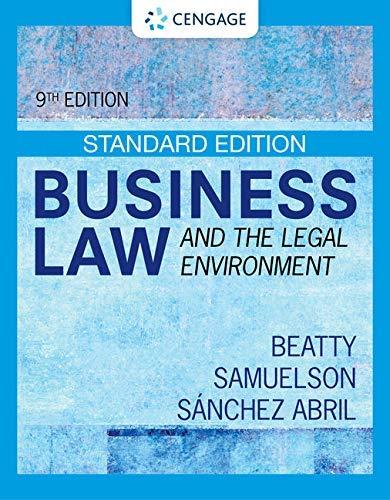Question
Under the language of the underinsurance policy at issue here, the insurer agreed to pay $100,000 [7] for each person to a total of $300,000
Under the language of the underinsurance policy at issue here, the insurer agreed to pay $100,000[7]for each person to a total of $300,000 for each occurrence for bodily or compensatory damages to individuals covered by the policy if each person would have been entitled to recover all those sums from the other driver, but was precluded from doing so because the other driver was underinsured (1[a] and [b] ).[8]The insurer's liability was then limited by a provision ( 4[a][1] and [2]) that states that the amount by which the $100,000 for each person to a total of $300,000 for each occurrence exceeds the total limits available to the owner or operator of the underinsured vehicle will determine the amount to be paid.[9]Further clarity is given to
781
*781this clause by the next provisions ( 4[a][2] and [3]), which say that the amounts available are not increased because of the claims made or persons injured.
Question 1
Do non-obese patients with impaired fasting glucose, i.e. a glucose level
of 6.1-6.9 mmol/L, need drug treatment with biguanides if lifestyle
modifications fail to normalize?1914
Question 2
Do non-obese patients with impaired glucose tolerance (but not fulfilling
the criteria for diabetes mellitus) need drug treatment with biguanides if
lifestyle modifications fail to normalize their post-prandial blood glucose
measurements?
Question 3
It is the Muslim month of fasting currently. I would be grateful if you
could advise on how to adjust the insulin regimen of a type 1 diabetic
patient, for example a 21-year-old girl who is on subcutaneous Actrapid
(short-acting soluble insulin) 22 units t.d.s.
Question 4
I would like to know more about the use of the glitazone group in type 2
diabetes: its action, side-effects, precautions taken on using them.
Question 5
In a patient receiving oral antidiabetics, should the drug be administered
just after taking the blood sample for fasting blood glucose level (and
before a meal), or just prior to the sample being taken?
Question 6
1. Is inhaled insulin a suitable substitute for injectable insulin?
2. Is there, or will there soon be, insulin in the form of a tablet?1924
Question 7
What are the complications of insulin other than hypoglycaemia and
injection?
Question 8
I would like to know the processes that go into administering the
Alberti's/modified Alberti's regime in patients with uncontrolled
diabetes mellitus.
Question 9
Is there any role for steroids in the management of resistant diabetes
mellitus (daily insulin requirement exceeding 100 units/day)? Don't they
make glycaemic control worse?
Question 10
What is the importance of potassium chloride (KCl) in the treatment of a
diabetic patient (pre-operative care)? The formula in the text is explained
as 16 U of insulin10 mmol of KCl500 mL 10% glucos
Step by Step Solution
There are 3 Steps involved in it
Step: 1

Get Instant Access to Expert-Tailored Solutions
See step-by-step solutions with expert insights and AI powered tools for academic success
Step: 2

Step: 3

Ace Your Homework with AI
Get the answers you need in no time with our AI-driven, step-by-step assistance
Get Started


